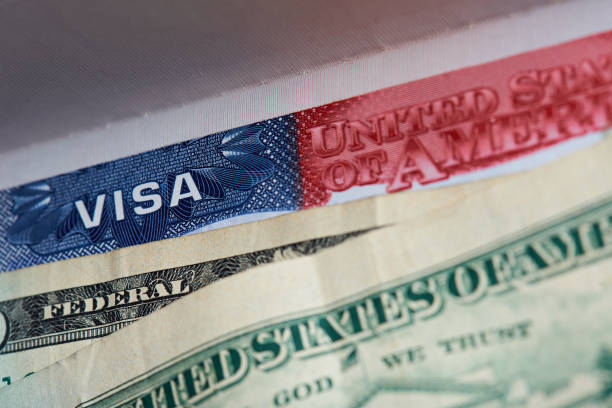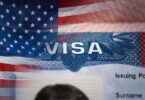Dreaming of starting a new life in the United States but worried about your empty bank account? You’re not alone. Many people wonder how to move to America without having enough money, and while it’s a challenging journey, it’s not impossible. With careful planning, resourcefulness, and determination, you can make it happen.
In this guide, we’ll walk you through practical steps to relocate to the U.S. on a tight budget, from visa options to finding free resources and building a support network.
Let’s dive into how you can turn your American dream into reality, without breaking the bank.
Why Move to America without enough Money?
The U.S. has long been a land of opportunity, offering jobs, education, and a chance to reinvent yourself. But moving internationally is expensive, flights, visas, housing, and living costs add up fast.
If you’re starting with little to no funds, you’ll need to be creative. There are ways to minimize costs and tap into opportunities that don’t require a big upfront investment. Whether you’re escaping hardship, chasing a career, or seeking a fresh start, this guide is for you.
Step 1: Research Visa Options for Low-Cost Entry
You can’t legally live or work in the U.S. without a visa, so your first step is figuring out how to get one affordably. Here are some options tailored for those with limited funds:
Visitor Visas (B-2)
A B-2 tourist visa lets you stay in the U.S. for up to six months. It’s not a long-term solution, but it’s a low-cost way to enter and explore opportunities. The application fee is $185 (as of 2025), and you’ll need to prove you’ll return home, tricky with no money, but possible with a strong case (e.g., family ties or a return ticket).
Work Visas with Sponsorship (H-1B, J-1, H-2B)
Work visas like the H-1B (specialty occupations) or H-2B (temporary non-agricultural jobs) often require employer sponsorship. The catch? You need a job offer first. Look for U.S. companies hiring internationally, hospitality, agriculture, or seasonal work are good bets. Some employers even cover visa fees, reducing your costs to zero.
Au Pair Programs (J-1 Visa)
If you’re under 26 and good with kids, consider becoming an au pair. Agencies connect you with American families who pay for your flight, visa, and provide room and board. You earn a small stipend while living in the U.S., giving you a foothold with no upfront cash.
Asylum or Refugee Status
If you’re fleeing persecution or danger, you might qualify for asylum or refugee status. This route is free to apply for once you’re in the U.S., but it’s a serious legal process—only pursue it if your situation genuinely warrants it.
Pro Tip: Use free online resources like the U.S. Citizenship and Immigration Services (USCIS) website or forums like Reddit’s r/immigration to research eligibility and costs.
Step 2: Secure Free or Cheap Travel to the U.S.
Flights to America aren’t cheap, but there are ways to cut costs or travel for free:
Work-for-Travel Programs
Organizations like Workaway or WWOOF connect you with U.S. hosts offering room and board in exchange for work (e.g., farming, hostel help). Some may even assist with travel costs if you commit long-term.
Relocation Jobs
Look for jobs that include relocation perks. Nanny positions, seasonal farm work, or cruise ship jobs sometimes cover your flight if you’re hired from abroad.
Fundraising Your Ticket
Crowdfund your plane ticket through platforms like GoFundMe. Share a compelling story, people love helping dreamers with big goals. Alternatively, ask family or friends to pool resources for a one-way ticket.
Budget Airlines and Deals
If you must pay, use sites like Skyscanner or Google Flights to find the cheapest fares. Fly into smaller airports (e.g., Oakland instead of San Francisco) and book midweek for savings.
Step 3: Find Free Housing in the U.S.
Housing is a major expense, but you can avoid rent with these strategies:
Couchsurfing
Couchsurfing.com connects travelers with hosts offering free places to stay. It’s perfect for your first few weeks while you get settled, just be respectful and offer to help out.
Live-in Jobs
Jobs like caregiving, house-sitting, or property management often include free housing. Check Craigslist, Indeed, or Care.com for openings. For example, elderly care positions might provide a room plus a salary.
Shelters and Charities
If you arrive with nothing, organizations like the Salvation Army or local churches offer temporary shelter and meals. They can also connect you to job resources.
Intentional Communities
Groups like co-ops or communes (find them on ic.org) welcome newcomers in exchange for labor. It’s unconventional, but it’s free and builds community.
Step 4: Get a Job Fast—Even Without Money
You’ll need income to survive, so prioritize quick employment:
Day Labor and Gig Work
Cash-in-hand jobs like construction, moving, or landscaping don’t require paperwork upfront (though you’ll need legal work authorization eventually). Apps like TaskRabbit or Fiverr let you earn through small gigs, think dog walking or freelance writing.
Entry-Level Roles
Fast food, retail, and warehouses (e.g., Amazon) hire quickly and often don’t check finances. Walk into a McDonald’s or Walmart and ask about openings, many offer same-day interviews.
Network for Opportunities
Tell everyone you meet you’re looking for work. Join local Facebook groups or attend free community events to connect with people who can vouch for you.
Keyword Tip: Search “jobs for immigrants with no money” or “cash jobs in [city]” to find leads tailored to your situation.
Step 5: Access Free Resources in the U.S.
America has a wealth of free support, tap into it:
Food Assistance
Food banks, soup kitchens, and pantries (find them via FeedingAmerica.org) provide free meals. Some cities also have “pay what you can” cafes.
Transportation
Walk or bike when possible. Many cities offer free bus passes through nonprofits or discounted public transit for low-income residents.
Education and Skills
Libraries offer free internet, job training, and English classes. Programs like Goodwill’s career centers help with resumes and interview prep at no cost.
Healthcare
Free clinics and sliding-scale health services (check HealthCare.gov) ensure you stay healthy without spending a dime.
Step 6: Build a Support Network
Moving with no money means relying on others. Here’s how:
Connect with Immigrants
Find expat or immigrant communities online (e.g., X posts with hashtags like #immigrantlife) or in person. They’ve been in your shoes and can offer advice or a couch.
Leverage Social Media
Post in local groups on X or Facebook: “New to [city], seeking work/housing tips!” People often respond with leads or offers to help.
Religious Organizations
Churches, mosques, and synagogues frequently assist newcomers with food, clothes, or job connections—regardless of your faith.
Step 7: Plan for the Long Term
Once you’re in the U.S., focus on stability:
Save Every Penny
Live frugally—cook at home, avoid luxuries, and stash cash for emergencies or visa renewals.
Legalize Your Status
If you entered on a temporary visa, explore paths to permanent residency (e.g., marriage, employer sponsorship). Free legal aid clinics can guide you.
Upskill for Better Jobs
Take free courses on platforms like Coursera (audit mode) or YouTube to qualify for higher-paying roles.
Challenges of Moving to America with No Money
It’s not all smooth sailing. You might face:
Legal Risks: Overstaying a visa or working illegally can lead to deportation.
Isolation: Without funds, building a social circle takes effort.
Survival Stress: Scraping by can wear you down—mental resilience is key.
Mitigate these by staying informed, seeking help, and keeping your goals in sight.
In Conclusion
Relocating to the U.S. with no money is a bold move, but it’s achievable with grit and ingenuity. Start with a visa plan, secure cheap travel, and lean on free resources like housing programs, gig work, and community support. The journey won’t be easy, but countless immigrants have done it before you, and succeeded. Ready to take the leap? Your American adventure starts now.
How to Move to Luxembourg with Visa Sponsorship: A Step-by-Step Guide for 2025






